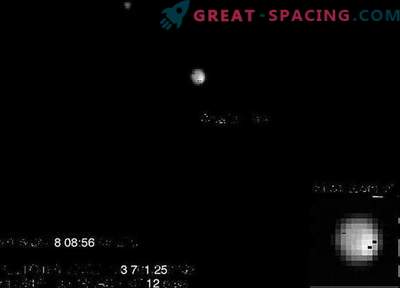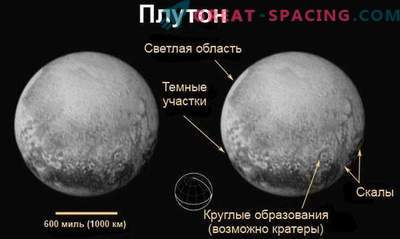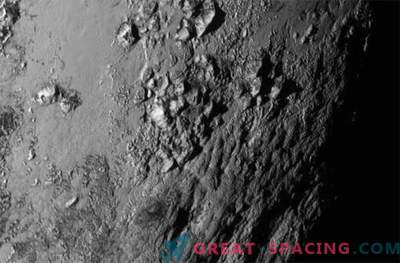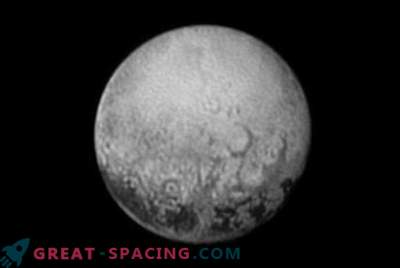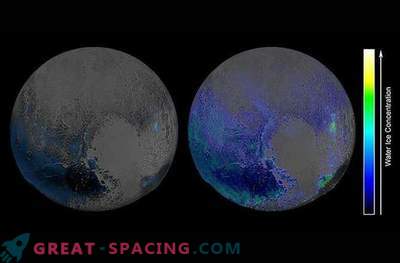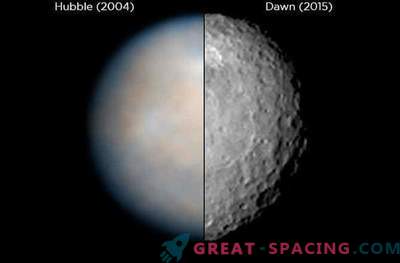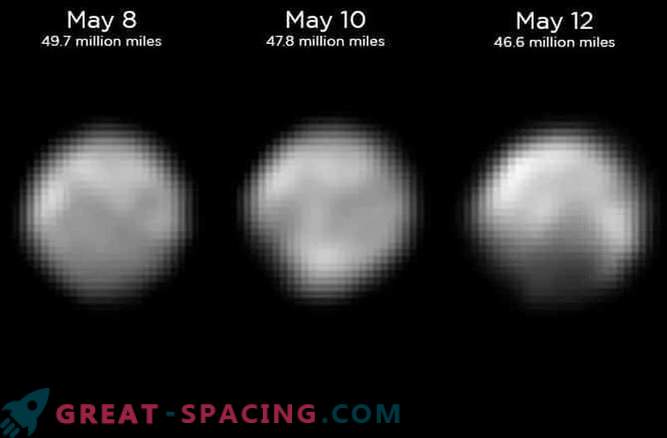
NASA's New Horizons Interplanetary Station is getting closer to Pluto every day. Moving at a speed of 750 thousand miles a day, it allows us to get more and more detailed images.
In the last photos, transmitted to Earth from a camera for detailed shooting from a long distance LORRI, huge dark areas began to appear. And now we are at the new stage of studying Pluto, since these pixelated images are the first such high-quality images of the dwarf planet for the entire time of the study.
“Since New Horizons is getting closer to Pluto, the latter is turning from a small point of light into an extremely interesting planetary object,” said Jim Green, head of the NASA planetary science department in today's news release (Wednesday). “We will be part of an exciting journey in the next seven weeks.”
“These new images show us that each of the differences on the surface of Pluto is unique. This can be either a complex geological structure or different compositions of the surface itself in different areas, ”said New Horizons principal investigator Alan Stern of the Southwestern Research Institute in Boulder, Colorado. “The pictures also support the hypothesis that Pluto has a polar cap, the length of which depends on the longitude. We will be able to come to the final determination of the bright spot in the polar region, when we get the results of the compositional spectroscopy of this site in July. ” In less than 2 months, New Horizons will come closer to Pluto. And judging by these increasingly high-quality images, it is highly likely that Pluto will turn out to be a rich and multilateral place.
“By the end of June, the image resolution will be four times better than in the pictures taken on May 8-12. By the time of closest approach, we expect to receive an image with a resolution of 5000 more than today, ”added Hal Weaver, a research fellow at the New Horizons program from the Laboratory of Applied Physics at John Hopkins University in Laurel, Maryland.
Recent photos are processed using the “deconvolution of images” method, which allows us to see deep differences in the surface morphology. These changes in surface albedo, in all likelihood, are the real signs that there are (possibly) bright polar ice caps and vast regions that absorb more light. However, at some stages of image processing, false details may appear, which will disappear in the results of later observations.
Can these regions be extensive dune fields? Or maybe these are complex canyons crossing large ancient craters and extinct volcanoes? Currently, these parts are not available for New Horizons, but it’s hard not to imagine what great opportunities the station is waiting for during a close flight near Pluto and its satellite system in July.

